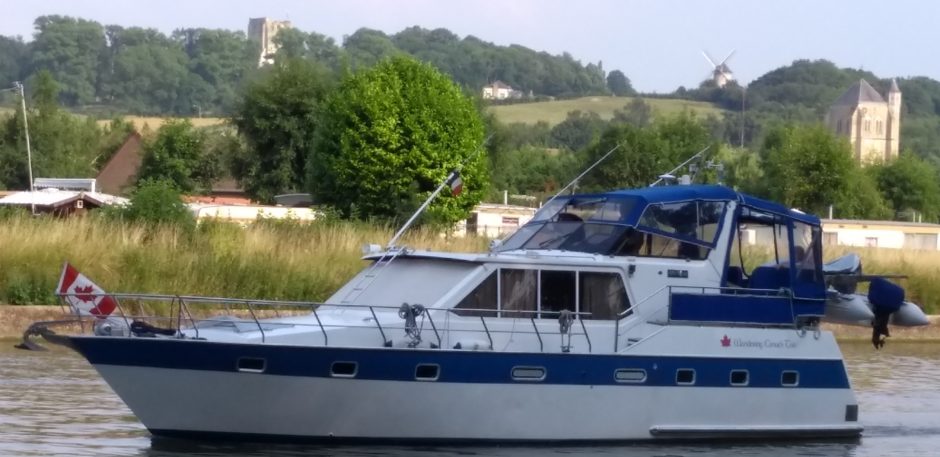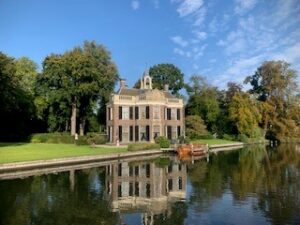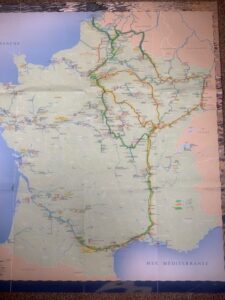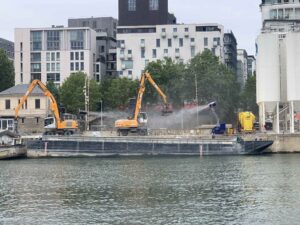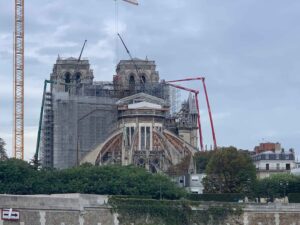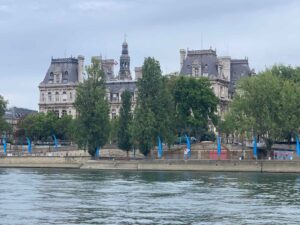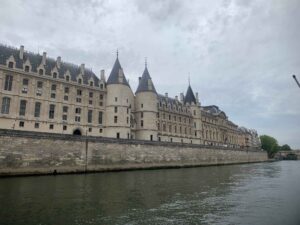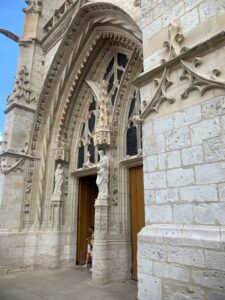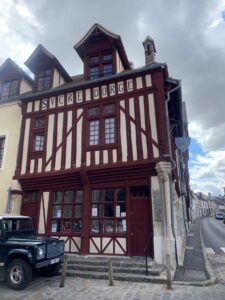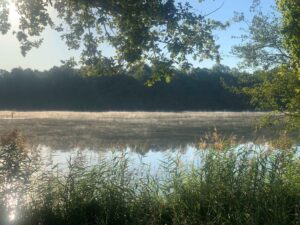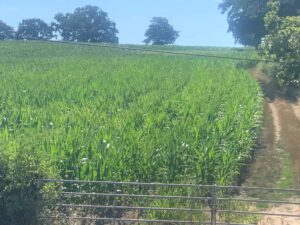After travelling up the Oise river, I am in the historic city of Compiègne. I am moored just upstream of a lock, and do have a significant amount of movement of the boat due to the wakes of passing ships, but the mooring is quite sheltered from the significant winds of the past few days.
Compiègne is famous for three major events: the Chateau of Compiègne, where Napoleon III set out to create a magnificent palace; the signing of the armistice of the first World War, in a railway carriage in a clearing of a nearby woods; and the signing of the surrender of France to the Nazis in World War II.
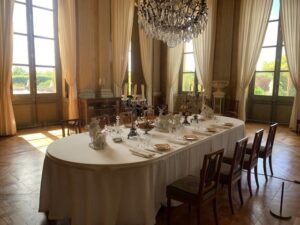
the dining room, set ‘en famille’

the map room

the king’s bedchamber

the library (I am drooling)

the Queen’s bedchamber

the ballroom (the white platform is modern, being prepared for a display of period clothing)

the forecourt

the front facade showing the huge nature of this structure
The Chateau is amazing: the state apartments are preserved as a museum. It is a huge palace, and the preserved state rooms are a small fraction of the interior. There are extensive descriptions of each room, in multiple

the tea room
languages, so that help to understand the purpose, history and details of the paintings and tapestries. Another part of the palace holds the national car museum. There are

a carriage for a rich person!
every sort of ancient vehicles, from horse-drawn carriages, through bicycles, sleighs, motorcycles, and ancient cars. This is not a museum for vehicles after 1918! it was very dark in this museum and hard to get photos that would do justice to the displays

some of the ancient motorcars on display
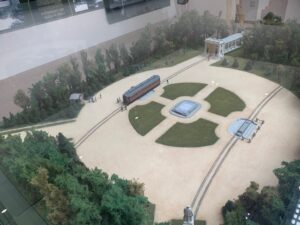
a model of the site for signing the Armistice in 1918: on the left, the carriage of the French. on the right, the place for the German carriage

the replacement carriage now again on display, (with Daniel, former student, visiting me on the boat)
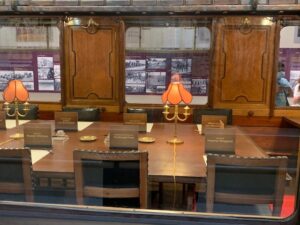
interior of the carriage, with the name placards of those present during the signing of the Armistice, Nov. 11, 1918

the central plinth now recovered from Berlin and restored as the focal point of the memorial, Marshal Foch’s statue in the distance
The Famous Railway carriage: Signing of the armistice.
The event of 1918 was to take place in the woods far from spectators and media people. There were railway tracks which would allow both the train with German functionaries, and, a similar arrangement for the French. The site was made into a memorial after WWI, and the building in the upper part of the model, a museum where the railway carriage was displayed.
Hitler was determined to erase all traces of the defeat of 1918, including the Treaty of Versailles. He was determined to humiliate the French by making them sign their surrender in the same carriage at the same place as the Armistice of 1918. Hitler had the railway carriage removed from the museum (cut a huge hole in the wall,) and placed upon the track as in 1918. After the French signed the surrender of France in 1940, the railway carriage was taken to Germany. He removed the original signed copy of the Armistice, and had the entire site destroyed (except the statue of Foch). The stones of the center memorial were numbered and taken to Berlin, where they were found in a hanger after the war. The carriage was eventually burned and destroyed in Germany, except for two handrails. The carriage now on display is an identical one, now carefully restored. The museum where the carriage is displayed, is an excellent one and carefully describes the individuals of all countries involved as leaders of both wars, the circumstances of both wars, and the results. It is an exceptionally balanced presentation.
